
The painting “Himalaya Everest” depicts the highest point on Earth. The mountain has the original Tibetan name Chomolungma. Since 1856, on the Himalayan maps, this peak has a new name – Everest – after the president of the Indian Geodesic Committee of India, Australian General George Everest, who first measured the mountains and found out that Chomolungma is the highest peak of the world.
Among the various images of nature, N. K. Roerich assigned a special place to the mountains. For him, mountains are a symbol of spiritual ascent, of approaching beauty, towards good. At the same time, mountains are a source of strength and energy, and the physical ascent itself awakens courage, endurance and patience in a person.
To transfer the vast spaces and plans of the Roerich mountains resorted to the method of parallel perspective. This method is characterized by the fact that spatial plans are viewed as if from the height of the “gaze out of infinity” and more distant plans are practically not reduced in size, but arranged in steps that go to the upper edge of the picture, filling all its space.
Another peculiarity in the interpretation of the mountains by N. K. Roerich is the clear separation of the crystal faces. This clarity of lines and contours is sometimes graphic in nature and is emphasized by sharp shadows or large color planes. At the same time, N. K. Roerich always revealed the rhythmic structure of the mountains, the alternation of peaks and hollows.
These features can be seen in the picture “Himalaya Everest”, where four rhythmic rows are distinguished: jagged foreground mountains, a strip of clouds, a strip of blue mountains with a more fractional rhythm of peaks, a strip of white snowy mountains forming a complex rhythmic pattern on a pale green sky.
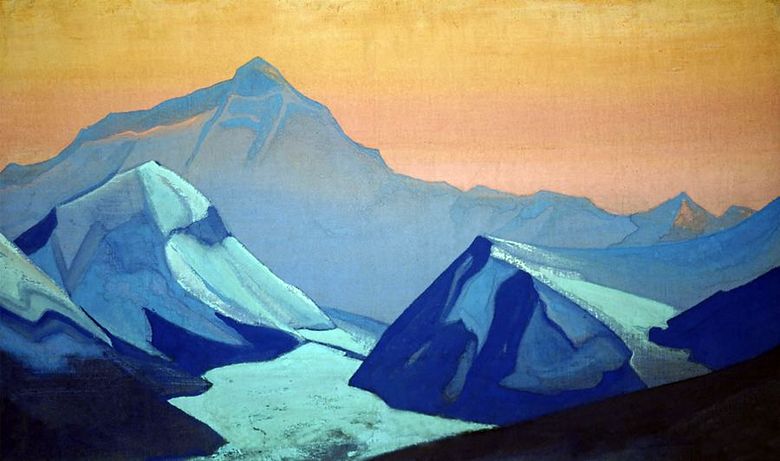 Everest de l’Himalaya – Nicholas Roerich
Everest de l’Himalaya – Nicholas Roerich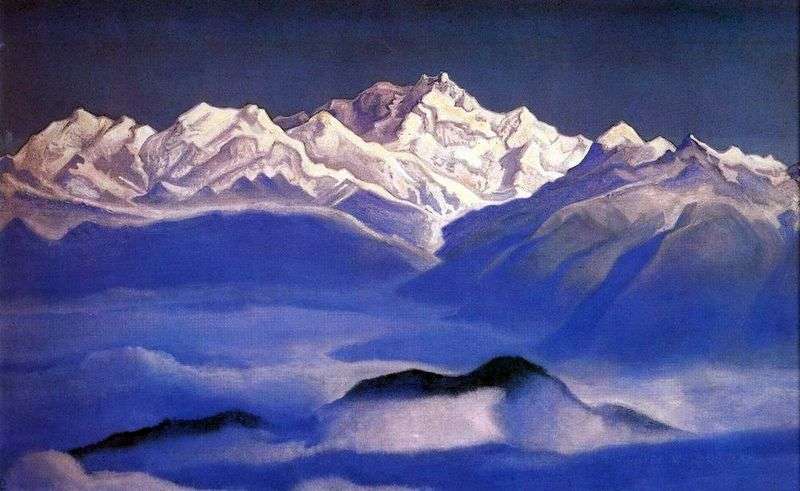 Himalayas (Blue Mountains) by Nicholas Roerich
Himalayas (Blue Mountains) by Nicholas Roerich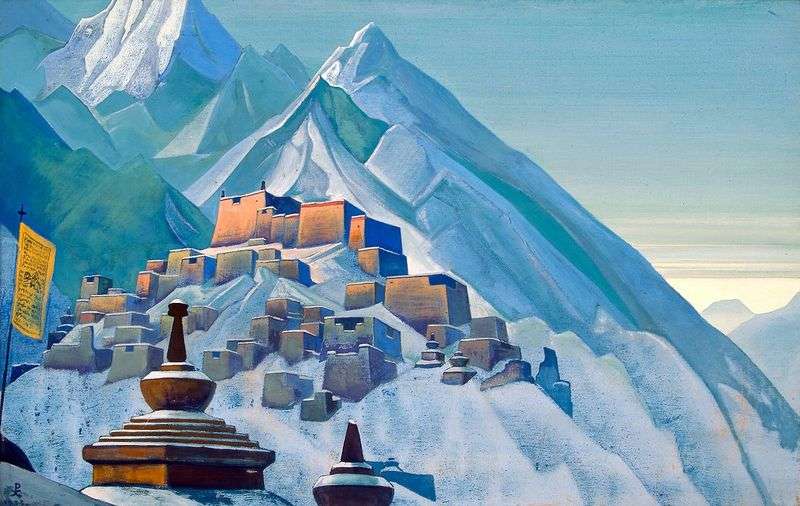 Tibet. Himalayas by Nicholas Roerich
Tibet. Himalayas by Nicholas Roerich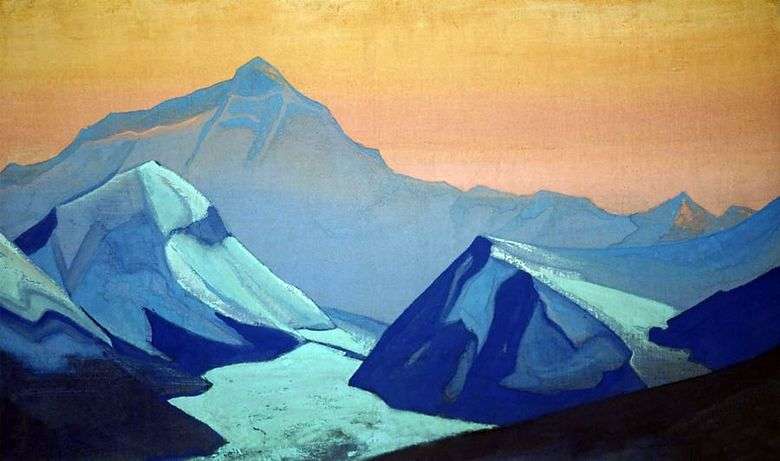 Himalaya Everest – Nicholas Roerich
Himalaya Everest – Nicholas Roerich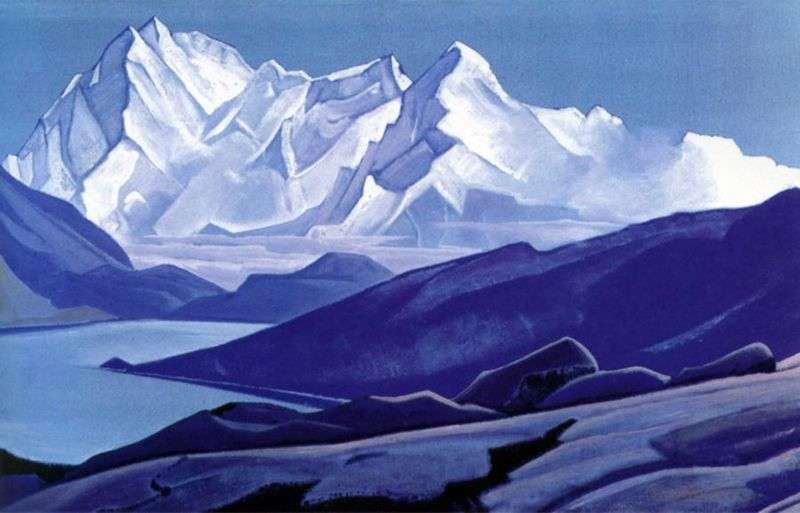 Sacred Himalayas by Nicholas Roerich
Sacred Himalayas by Nicholas Roerich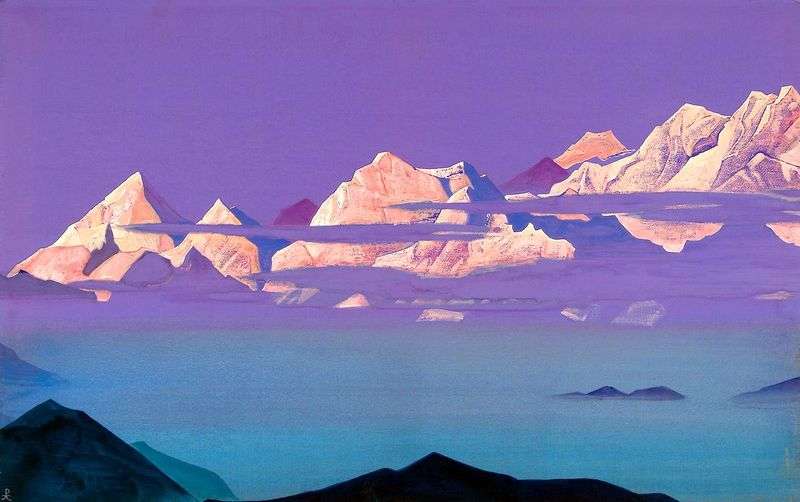 Himalayas. Pink Mountains by Nicholas Roerich
Himalayas. Pink Mountains by Nicholas Roerich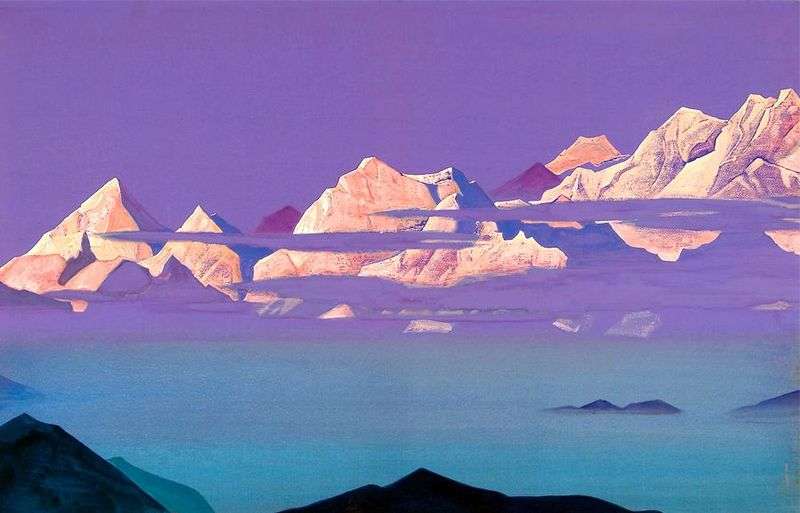 Pink Mountains by Nicholas Roerich
Pink Mountains by Nicholas Roerich Kanchenjunga by Nicholas Roerich
Kanchenjunga by Nicholas Roerich